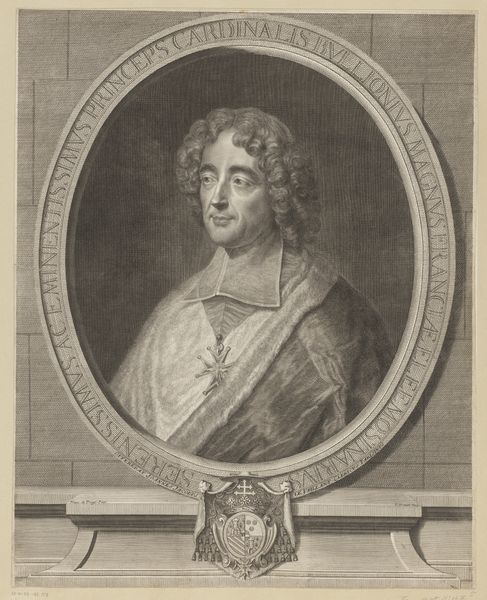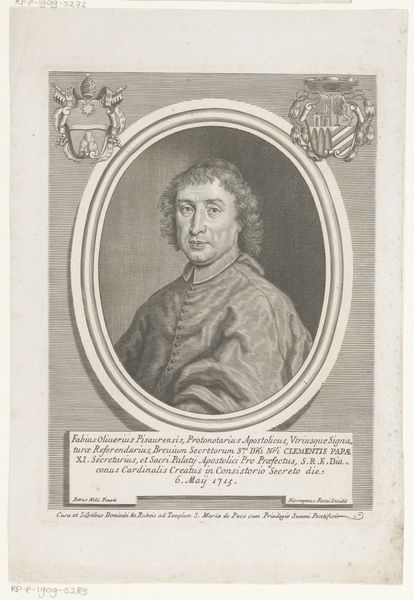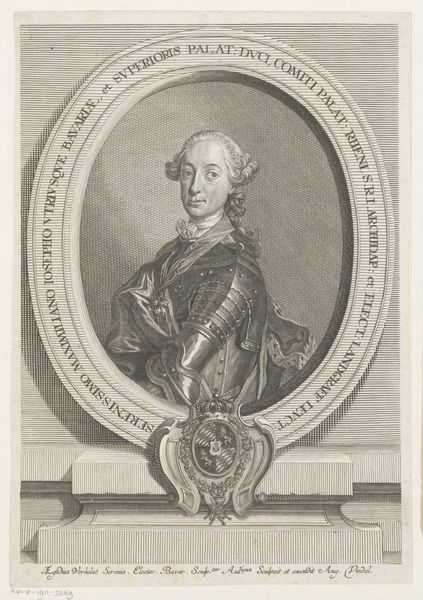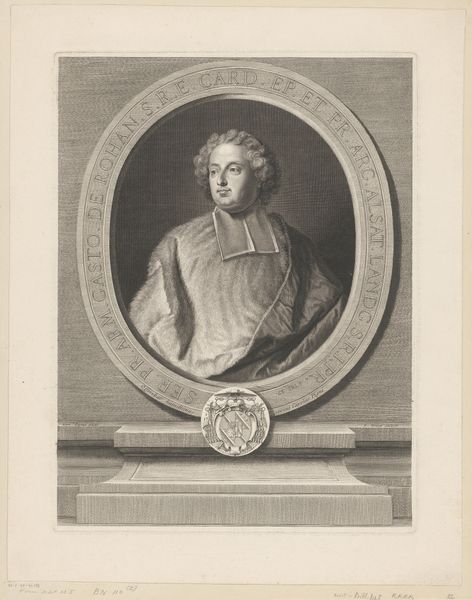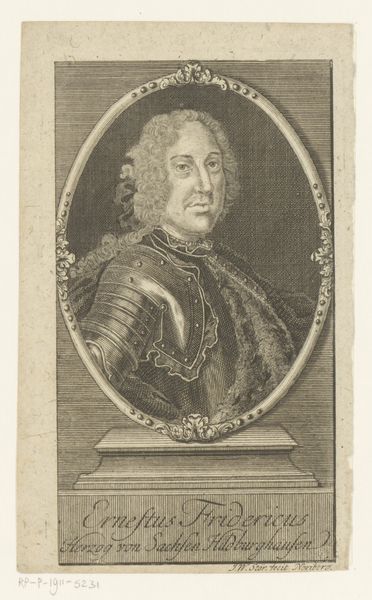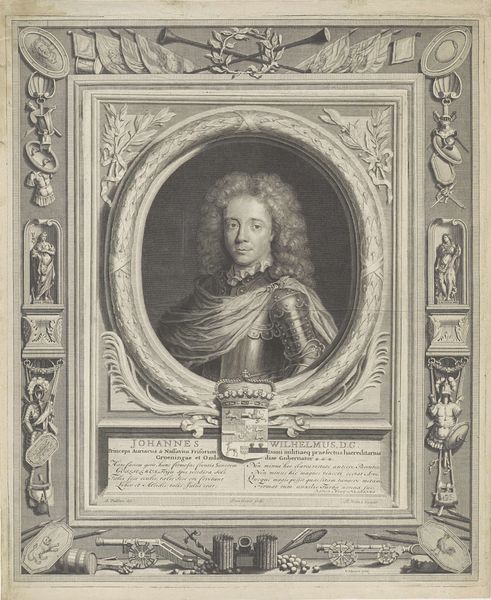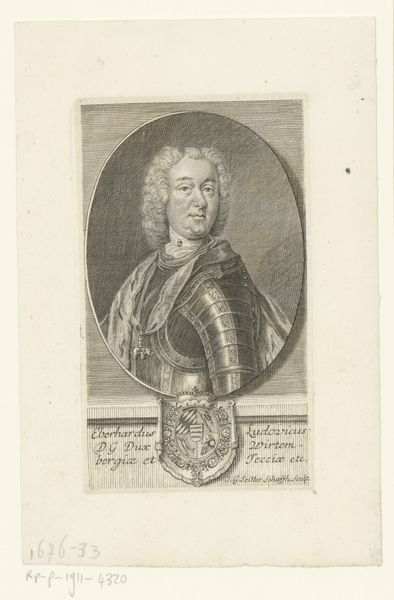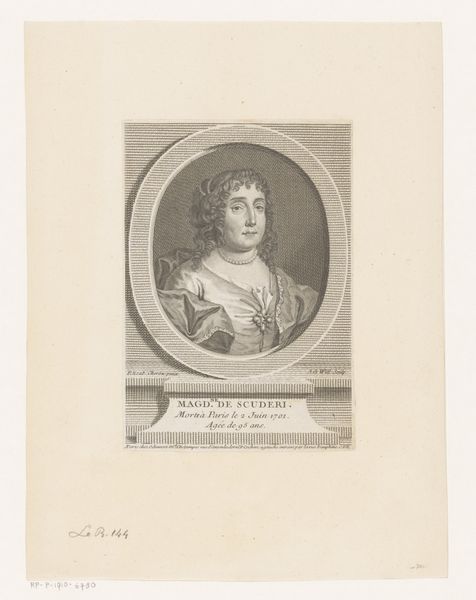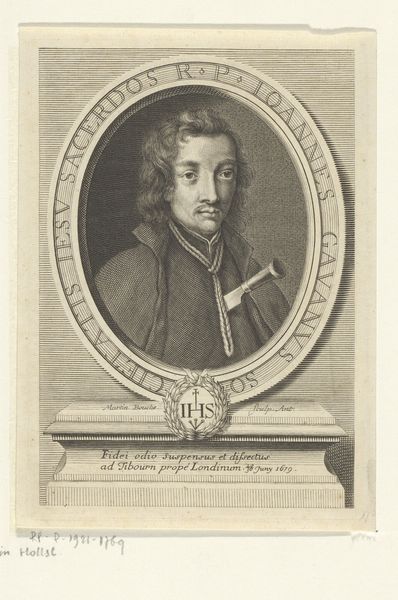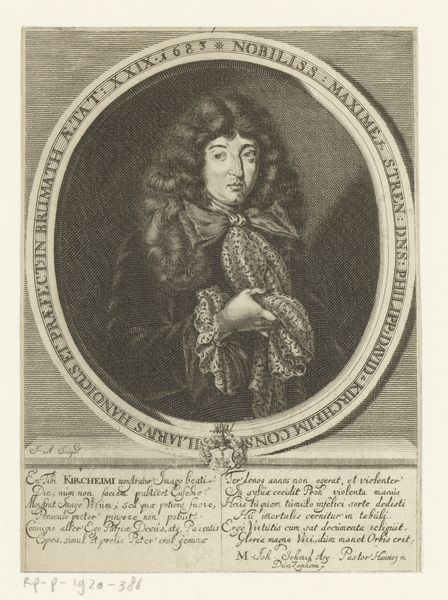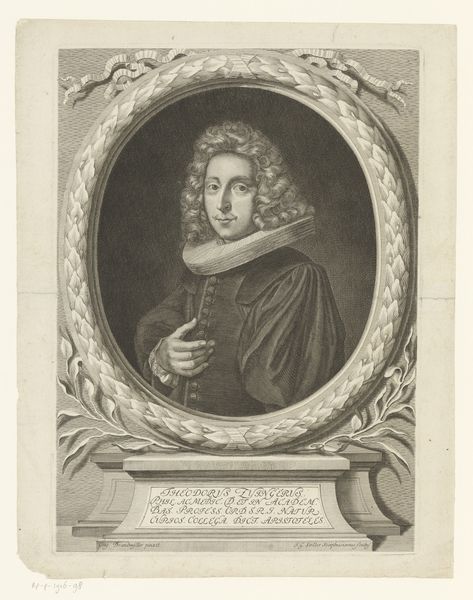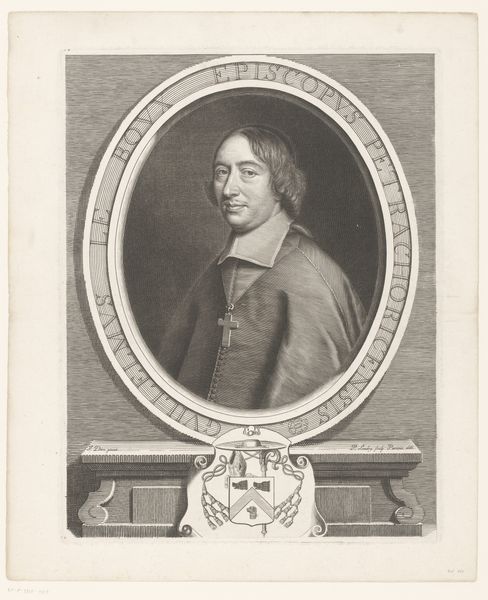
Portret van Emmanuel-Théodose de La Tour d'Auvergne 1733 - 1756
0:00
0:00
pierrefrancoisbasan
Rijksmuseum
engraving
#
portrait
#
baroque
#
old engraving style
#
history-painting
#
academic-art
#
engraving
Dimensions: height 150 mm, width 151 mm
Copyright: Rijks Museum: Open Domain
Curator: This engraving presents us with "Portret van Emmanuel-Théodose de La Tour d'Auvergne," a piece from the period 1733 to 1756. It's currently housed in the Rijksmuseum. Editor: Immediately, I'm struck by the density of detail. It's a formal, almost severe portrait, but the textures – the hair, the fabric, the backdrop – feel incredibly alive. Curator: Indeed. As an engraving, it's fascinating how the artist uses line to convey not just form, but also a sense of weight and presence. Notice the specific symbols within the crest, revealing not only the family lineage, but, by extension, his social position as an elite member of society. Editor: Absolutely. It also situates the cardinal squarely within the power structures of his time. We can think about the historical context; France was in a period of aristocratic dominance, which this piece clearly celebrates, while also acting as a vehicle for its perpetuation. Curator: Precisely. And the circular frame around his image feels like a lens focusing our gaze on a powerful religious figure. The columns visible behind him are indicators of his aristocratic origins. Editor: It makes me think about how portraits like this functioned—as status symbols, of course, but also as tools for solidifying a particular historical narrative that benefited the ruling class. And I wonder about the labor that goes unseen in producing these engravings – who were the engravers, and what were their own positions in society? Curator: A poignant question, definitely inviting us to examine the unseen, and consider the multitude of voices absent. It also illustrates, rather neatly, how a single image can unlock and encapsulate so many historical and artistic conversations. Editor: This portrait offers a vivid snapshot of power, class, and representation in 18th-century France. I come away thinking about who is represented, who is not, and why.
Comments
No comments
Be the first to comment and join the conversation on the ultimate creative platform.
